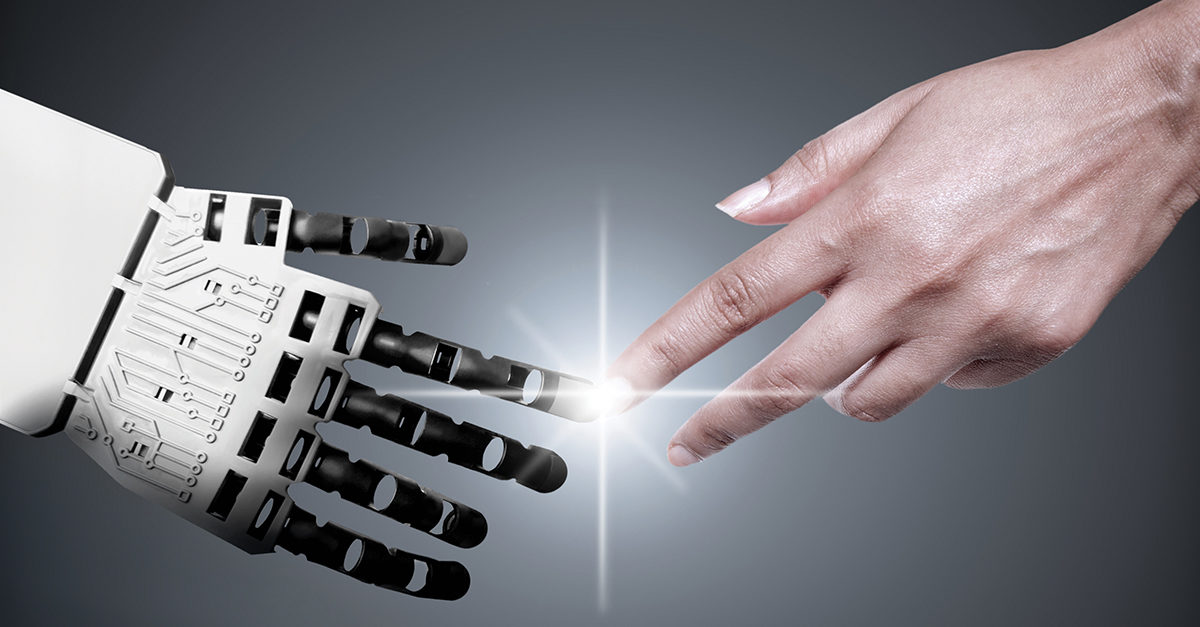If the trade show floor at ISSA/INTERCLEAN®was any indication, then we are seeing the dawn of the robot in the commercial cleaning sector.
During the October 2016 trade show in Chicago, IL, many major manufacturers unveiled robots, also referred to as autonomous floor cleaning machines. In addition, during ISSA/INTERCLEAN, a popular educational seminar focused on hands-free robotic cleaning, and a product that uses artificial intelligence for autonomous cleaning took home the show’s top Innovation of the Year Award.
The excitement around robotics indicates a shift in the way top engineers and manufacturers are thinking about cleaning. And in a surprising twist, there’s not much talk about these machines replacing human cleaning staff. On the contrary, robotic cleaning machines are actually being viewed as a path to elevate and streamline the cleaning profession.
Elevating the Industry
The use of robotics for cleaning is challenging the status quo in the industry, but doing so in a helpful way by disrupting the marketplace. “Disruption can be bad or good,” says Roger McFadden, president and chief science officer at McFadden & Associates LLC and a popular speaker in the professional cleaning industry. “This is disruption that will improve efficiency, productivity, and cleanliness. That’s the direction we want to go.”
The idea is to shift focus to higher-value cleaning tasks.
“The custodian’s responsibility will change, but be elevated by robotics,” McFadden says. “They’ll be treated more like a plumber or electrician who has extensive training and uses devices to do their job every day.”
During early testing, engineers at Brain Corp., a company that makes an artificial intelligence navigation machine that automates cleaning equipment, conducted extensive field interviews with a number of custodians. Phil Duffy, vice president of marketing and product management at Brain Corp., always made sure to ask the custodians, “How do you feel about the possibility of a robot taking your job?”
Duffy remembers one janitor had a particularly heartfelt response, and it stuck with him through product development and launch. “I have a 12-year-old daughter and it’s hard to give her something to aspire to because I’m just a janitor,” Duffy recalls his interviewee saying. “If I could tell my daughter that I’m actually a robot operator, I would feel so proud inside to give her something to look up to.”
Removing Repetition for Workers
Carnegie Robotics LLC recently partnered with Nilfisk in a multiyear, broad-ranging partnership to explore ways to bring automation to cleaning platforms.
Although Carnegie Robotics has a rich history in developing innovative robotic solutions for defense and agriculture, when it began working with Nilfisk three years ago, the engineers had to fully learn and understand cleaning processes before they could move forward. To accomplish this, Carnegie Robotics’ engineers went into the field to research cleaning procedures and spoke extensively with end-users in an effort to understand where custodians needed the most help.
Steve DiAntonio, president and CEO of Carnegie Robotics, says his team started by searching for the repetitive tasks. “Whenever you bring in an autonomous system, you never try to automate the entire task,” he says. “There are always many applications you can’t automate cost-effectively. There’s some degree of complexity a human being is much better equipped to do.”
DiAntonio says the robot should automate the routine and boring parts of the job. “The idea is you have a scrubber, set it on its task, and then there are many other cleaning activities to perform. It’s really about productivity and leveraging the people you do have,” he says.
Jeffrey Burnstein, president of the Association for Advancing Automation, has seen this method work before, particularly in warehousing and distribution. “What we’ve seen is that robots are doing the dull, dirty, and dangerous jobs. Because people no longer have to do those jobs, they can do safer, higher-paying positions with more growth opportunity.”
How the Technology Works
Burnstein says in some cases, robots can be taught by guiding them manually.
That can be seen in the autonomous scrubbers that one manufacturer is introducing. The scrubbers have two modes: copycat and in-fill. In copycat mode, an operator will press a button and then take the machine into a room and clean it in a normal way. The machine memorizes the space where the operator took it, and the next time that room needs cleaning, the operator can press a button and the machine will take off to perform the task it memorized.
Other times, machines use more advanced artificial intelligence to clean. In in-fill mode, the scrubber can travel around the perimeter of a room on its own, calculating the most effective coverage plan using algorithms based on the shape of the room and the speed of the robot.
Some robots can even sense and avoid obstacles. Obstacle avoidance is something that’s been used in the production of self-driving cars, based largely on GPS.
However, cleaning makes the task of obstacle avoidance even more complex for engineers and programmers. Duffy from Brain Corp. says, “In the world of robotics, you naturally want to stay away from things to avoid them, but in cleaning, you need to be close enough to clean.” To help tackle this challenge, some robotic devices use a multilayered vision system and several lasers that map the space using sonar to avoid obstacles—and even tell the difference between objects and humans, reacting differently to each.
Impact on Training
While the technology behind autonomous scrubbers may be complex, it can help to ease employee training for custodians who are learning the ropes and significantly cut back on the time employees need to spend in training. The training to operate many of these autonomous machines is straightforward, which leaves time to focus on high-value training topics like safety, the science behind cleaning, or disinfection principles rather than practicing the proper procedures for certain high-volume, but repetitive, tasks.
Impact on Staffing
Robots—unlike employees—won’t quit on you, and they won’t get a better job somewhere else, either. They also have the potential to limit turnover of human employees. In fact, Nilfisk was surprised to find a positive impact on turnover during testing phases of autonomous floor cleaners.
Additionally, robots can fill in for humans when they are unable to work to their full potential.
Brian Kirkendall, global director of product marketing at Nilfisk, says, “When the custodial staff has back injuries and you have people on workers’ comp, they have limitations on what they can do.” However, a facility manager can partner an employee coming off of workers’ comp with a machine that can do repetitive and strenuous parts of the job. “That employee can’t sit on a machine for three hours [because of the injury], but they can do other tasks while the machine is doing that repetitive work in the hallway,” Kirkendall says.
Where Can You Find a Robot?
Many of those involved in the robotics field agree that schools are a high-potential facility that will benefit from the use of robotics to clean floors—specifically, for areas like the high school gymnasium. “A larger high school or a larger school district will have a number of large spaces they clean on a regular basis,” says Brian Kirkendall, global director of product marketing at Nilfisk. “An autonomous cleaner can come in and clean the gym floor while the custodian is getting the stands ready, getting the table out for the scorekeeper, allowing him to get that work done with less stress in a tighter time window than today.”
Impact on the Bottom Line
Robots are seen by manufacturers and those investing in them as a method to streamline cleaning processes and optimize efficiency. “For cleaning contractors paid to do these activities—the more efficient they become, the more business they can take on, and the lower cost they can pass on to their customers,” McFadden says. And as more manufacturers look at ways to bring robotics to their cleaning equipment, and explore ways to expand robotics beyond floor care, the price of these machines may even go down.
“It’s a niche right now,” Kirkendall says. “But we think it’s an important niche. It’s not going to be the biggest part of the market any time soon, but there’s a market that can be served and that market is growing in the next five to 10 years.”




